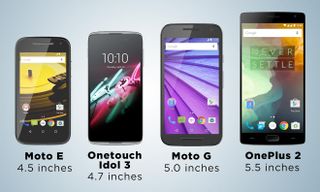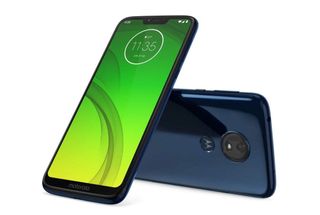How to Buy an Unlocked Phone
If you're intrigued by the affordable prices and freedom offered with unlocked phones, here are five questions you should consider before buying.

Thanks to their affordable prices and the freedom they offer, unlocked phones are rising in popularity. You don't have to go through your carrier first to get a device with all the features you need. You can pick up an unlocked phone and then plug in a SIM card from the service provider you choose. Brands such as Alcatel, Asus, Blu, Google, Motorola and ZTE offer plenty of options.
Going the unlocked route doesn't have to be confusing. Here are five easy questions you need to answer.
Will it work on your network?
Why you can trust Tom's Guide
Most unlocked smartphones work with GSM networks, which means carriers like AT&T, T-Mobile, Cricket and MetroPCS in the United States. However, some unlocked devices, such as the Moto X Pure Edition, work with both GSM and CDMA carriers. That means you can plug in a SIM card from Verizon or Sprint as well. Be sure to check which networks your handset supports before you buy.
How big a phone do you want?
A bigger phone means a bigger display, giving you more room to enjoy movies, games and apps. If you've been squinting at your screen, it's a good idea to opt for a 5.5-inch display. Those who prefer to use one hand with their phones should get a version with a smaller, 4.7- to 5-inch screen.

Display resolution is important, too. Many affordable unlocked phones have 720p screens, which are good enough for most content. But if you want even more detail, pick a phone with 1080p resolution.
How hard will you push your phone?
For simple tasks, such as texting and uploading pictures to Facebook, a slower, dual-core CPU is enough. To smoothly download multiple files, convert videos and process spreadsheets, you'll want a faster chip, with four or six cores, but that'll often cost you more.
MORE: Best Smartphones on the Market Now
More-powerful CPUs can provide greater speed and multitasking capabilities. For instance, the Qualcomm Snapdragon 400 series offers clock speeds of up to 1.7-GHz, which is slower than the 2.5-GHz top speed of the Snapdragon 800 line.
How often do you share photos?
A good camera can mean the difference between no likes and lots of them on Facebook. Smartphone cameras run the gamut from mere 5-megapixel shooters to capable 13-MP sensors, but it's not just about the megapixels. Anything 8-MP and sharper will be clear enough for most social networks, but other factors, such as sensor size and low-light performance, affect image quality as well. A good way to determine the quality of a smartphone's camera is by looking at sample photos in online reviews.
MORE: See all of Tom's Guide's top-rated unlocked phones
How much do you want to pay?
For less than $200, you can pick up very good bargains like the Moto G or Alcatel Onetouch Idol 3 (4.7). They have less-powerful processors and smaller displays but cover all the basics for a great price. For $50 more, the 5.5-inch Alcatel Onetouch Idol 3 gives you a full-HD display, long battery life and an octa-core CPU. Those looking for high performance and who can spend $300 or more will find the Asus ZenFone 2 (with 4GB of RAM) a compelling option, along with the Moto X Pure, which has a 21-MP camera.

Sign up to get the BEST of Tom’s Guide direct to your inbox.
Upgrade your life with a daily dose of the biggest tech news, lifestyle hacks and our curated analysis. Be the first to know about cutting-edge gadgets and the hottest deals.
Cherlynn is Deputy Editor, Reviews at Engadget and also leads the site's Google reporting. She graduated with a Master’s in Journalism from Columbia University before joining Tom's Guide and its sister site LaptopMag as a staff writer, where she covered wearables, cameras, laptops, computers and smartphones, among many other subjects.



